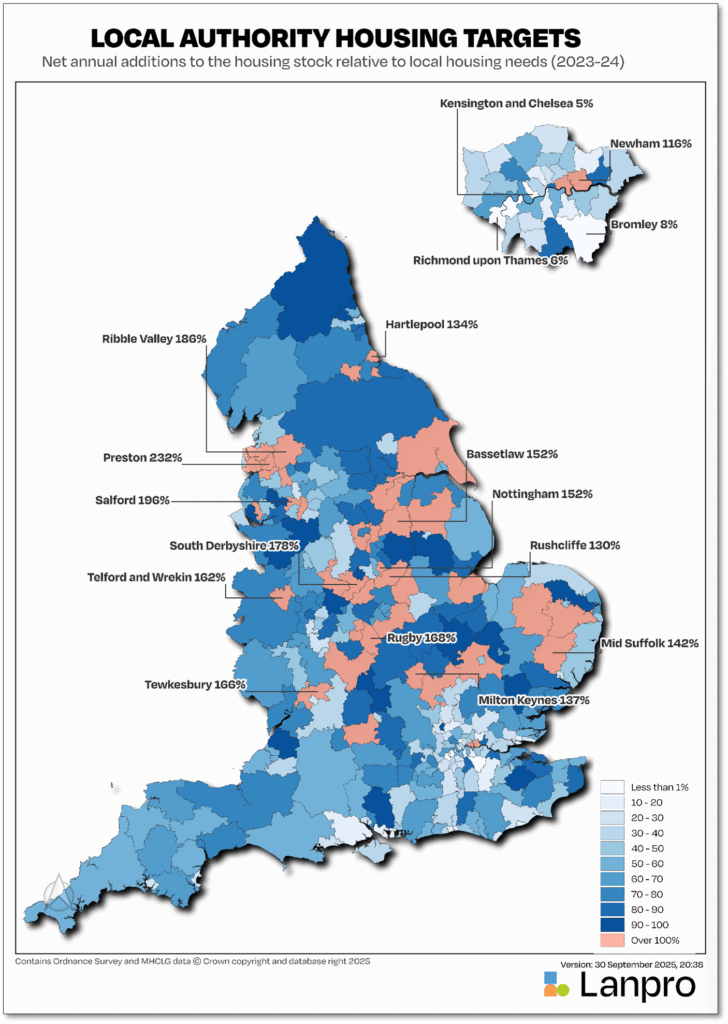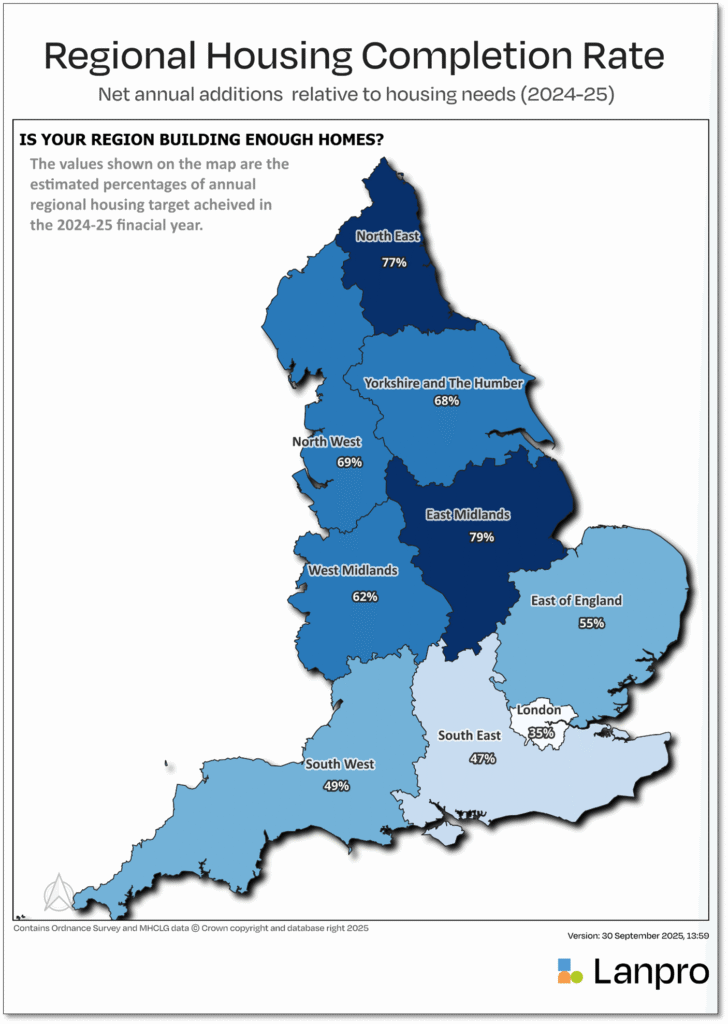Labour’s flagship pledge to deliver 1.5 million homes by 2029 is at serious risk of being missed with new analysis showing that current building rates would achieve little more than half that figure.
Research by planning consultancy Lanpro, based on government data, reveals that housing delivery in England is 10% below the 10-year average and well short of the 300,000 homes per year widely regarded as the minimum required to meet the government’s target.
According to the latest figures from the Ministry of Housing, Communities and Local Government (MHCLG), around 196,500 homes were added to England’s housing stock in 2024–25 – the equivalent of 16,375 a month. Over the previous decade, the annual average was 222,746 homes, or 18,562 a month.
If this rate continues, Lanpro calculates that the country will fall around 860,000 homes short by the end of 2029 – missing the 1.5 million target by about 46%.
MISSED TARGETS
The shortfall is particularly acute in areas where housing demand is greatest.
Lanpro’s analysis shows that London and the South East are delivering just 35% and 47% of their assessed housing need respectively, while regions such as the East Midlands (79%) and North East (77%) are performing significantly better.
At local authority level, the disparities are even starker. Preston built homes at 232% of its target in 2023–24, compared with just 5 per cent in Kensington and Chelsea and 8 per cent in Bromley.

The findings highlight the structural imbalance between where homes are needed most and where they are actually being built.
Labour has introduced a series of policy measures aimed at unblocking delivery, including the creation of a ‘grey belt’, mandatory local housing targets, and a new National Housing Bank to channel capital into development.

But planning bottlenecks, infrastructure limitations and market uncertainty continue to constrain output.
PRACTICAL DELIVERY
Faraz Baber (main picture), Chief Operating Officer at Lanpro, says: “During the Labour Party Conference we heard the mantra ‘build baby build’ numerous times. Yet our analysis shows that to pick up the necessary speed to meet the target, record breaking numbers of homes will need to be built in a short space of time.
“Based on the current housing delivery trajectory, if we do not see a significant uptick with immediate effect, we could see the target missed by almost half.”
COLLABORATIVE APPROACH
And he adds: “This will require a holistic, cross departmental collaborative approach, led by both No.10 and the Treasury, working with local authorities and government agencies.
“It will require a significant number of these homes need to be built directly by the Government and its associated agencies and will require alignment with transport and energy planning.
“Failing this, it’s not clear how the target will be met.”










